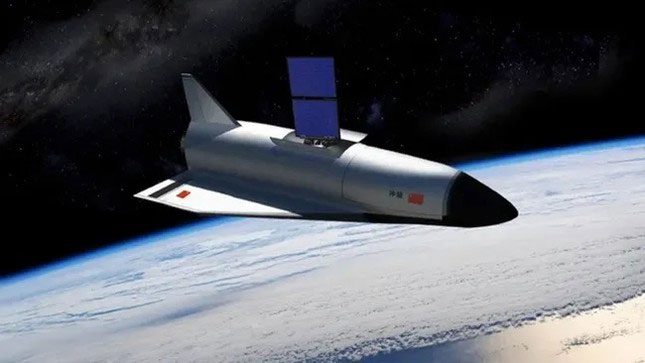Four days after completing its third mission, China’s mysterious robotic spacecraft Shenlong appears to have deployed six unidentified objects into orbit. One of these objects seems to be emitting signals.
China’s reusable spacecraft has become a bit more enigmatic. Just four days after its launch in the third mission, the Shenlong spacecraft seems to have placed six objects into Earth orbit.

Concept art of China’s reusable Shenlong spacecraft. (Image: Erik Simonsen via Getty Images).
The six mysterious objects have been designated as OBJECT A, B, C, D, E, and F. According to satellite tracker and amateur astronomer Scott Tilley, OBJECT A appears to be emitting signals reminiscent of those transmitted from objects launched during earlier Chinese missions.
Tilley told Space.com: “The emissions from OBJECT A are either nearby with limited data. They could be coming from a nearby object, but this is just speculation and not based on any evidence I know of.”
Meanwhile, OBJECTS D and E seem to be emitting signals without accompanying data. “It takes several days of observations using dish antennas for scientists to gather this data.“
Tilley and other satellite trackers have analyzed the signals and believe that the emissions are either from the objects themselves or from close proximity to them. This conclusion is based on observing them along their expected trajectory in the sky, the fact that no other known objects were within the tracking antenna’s beam when the data was collected, and the specific modulation of these signals is “unique and only seen from previous Chinese space missions using [frequency] 2280 MHz.”
“In summary, this iteration of the mission was launched into an orbit similar to the previous two, but operationally, it exhibits different radio behavior than before. Additional observations of emissions from OBJECTS D and E are new, but they may have been missed in previous missions if they were not continuous,” Tilley added.
In the two previous missions (launched in September 2020 and August 2022 respectively), the spacecraft was observed releasing a small unidentified object into orbit. It is speculated that these objects could be service modules for practicing payload deployment into orbit or even small satellites used for monitoring the spacecraft.
The United States also operates a reusable robotic spacecraft, the X-37B developed by Boeing. Similar to China’s Shenlong spacecraft, very little information is available about the operational capabilities of the X-37B, which was launched on a SpaceX Falcon Heavy rocket on December 28 after multiple delays.





















































